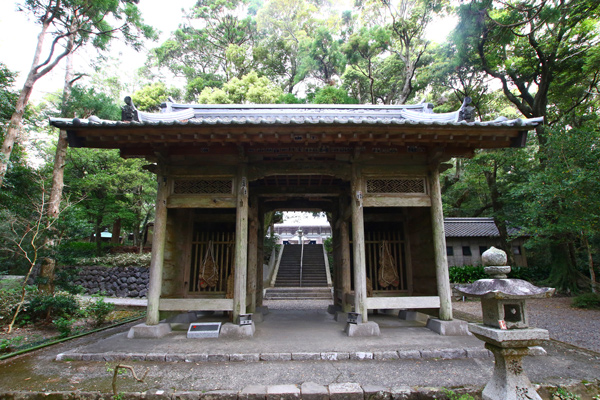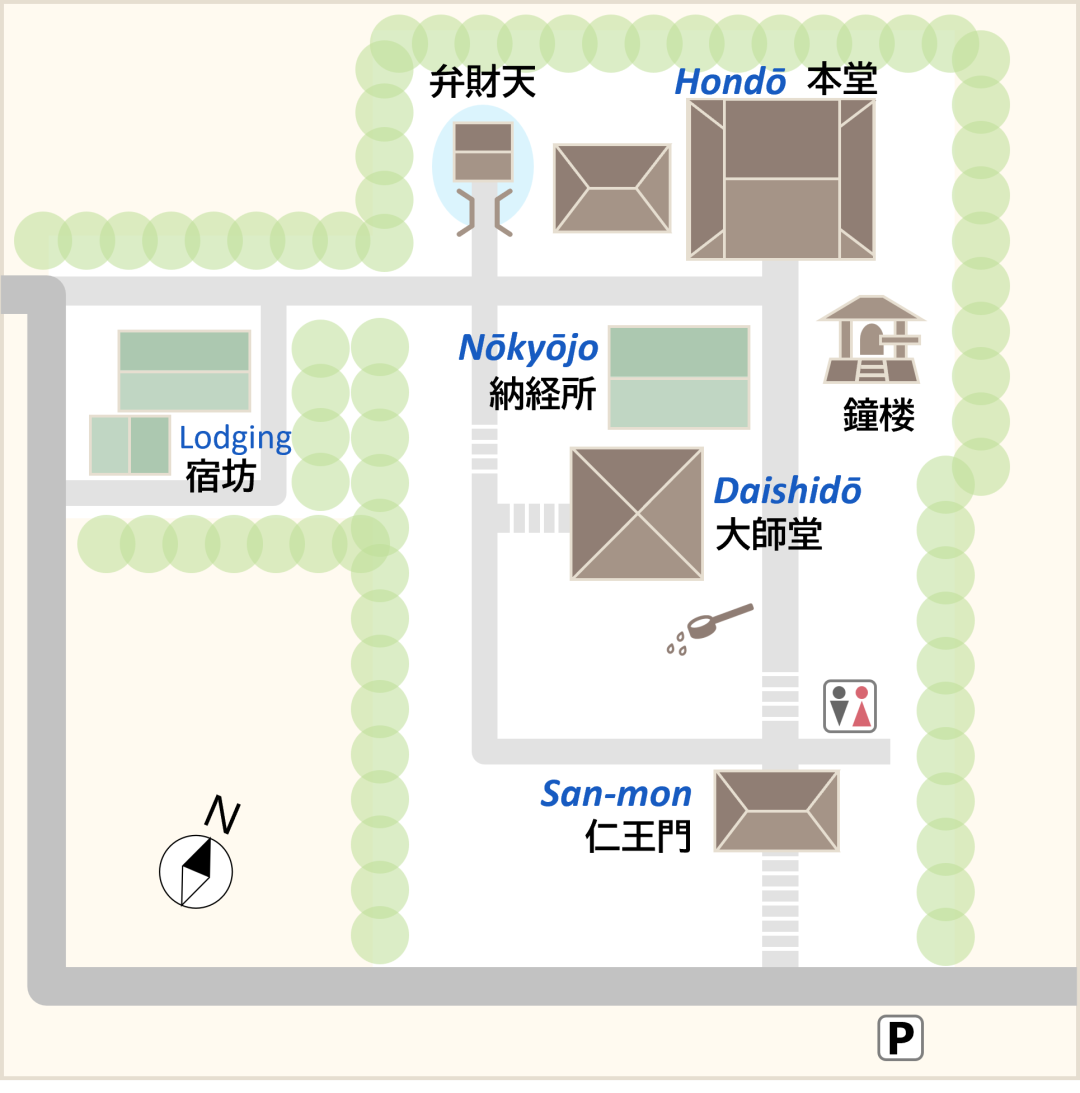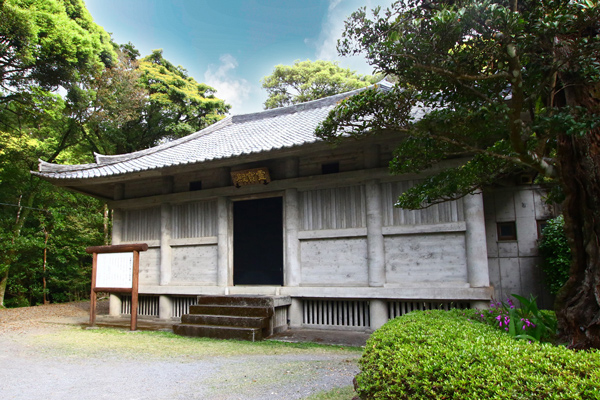The Shikoku Pilgrimage Temple Guide
Temple 26, Kongōchōji

Precinct map

History of the temple
When you head northwest along the coast from Cape Muroto, you will find a small cape jutting out into Tosa Bay. This cape is called Cape Gyodo (Performance Cape). The area is also known as Suzuriga Ura (Inkstone Bay) because it produces inkstones. On a hill above the cape is Kongōchōji, whose precincts are covered with primitive forest which gives a feeling of serenity. As one of the three temples in Muroto, it is also known as Nishidera (West Temple), and the temple stamp includes this name. There is a Fudodo (Fudo Hall) called Jonindo (Women's Hall) four kilometers from the temple. This is a sacred site where young Kobo Daishi performed Buddhist rituals. He made a daily pilgrimage between Kongōchōji and the Jonindo. The name Cape Gyodo may hold the memory of this.
According to legend, Kobo Daishi carved the principal image of Yakushi Nyorai (Medicine Buddha) and built the temple in 807 by order of Emperor Heijo (reigned 806-809). At the time of its construction, the temple was called Kongojoji. Women were barred from entering the temple. They worshiped at the Fudodo at nearby Cape Gyodo.
The next emperor, Emperor Saga (reigned 809-823), dedicated an imperial tablet to the temple and renamed it Kongōchōji, which is still used today as the temple’s institutional name. The following emperor, Emperor Junna (reigned 823-33), also designated Kongōchōji as an imperial temple. For ten generations, the temple priests were appointed by imperial order, and the temple continued to flourish for 16 generations. During the Muromachi period (1336-1573), the buildings were damaged by fire, but they were quickly restored. The temple flourished through the donation of land from Motochika Chosokabe and its designation as a temple of the lords of Tosa (Kochi) in the Edo period (1603-1868). In the Showa era (1926-1989), the Reihoden, a Shosoin-style hall of treasures, was constructed. The Kondo Tabidangu (a set of gilt-bronze traveling tools) that used to belong to Kobo Daishi, the only such relics in Japan, are also housed in Reihoden, along with many other important cultural properties.
Highlights
Kujira Kuyoto
Whale Memorial Pagoda, also known as Whale Temple
Hitotsubu Manbai no Kama
This pot is said to have saved people from starvation by multiplying by 10,000 the amount of rice that Kobo Daishi had cooked in it.

Annual Events
| March 21 of the lunar calendar | Opening of the statue of Kobo Daishi |
| December 31 - January 8 | Opening of the principal image of Yakushi Nyorai |
Details
Names: Ryūzuzan, Kōmyōin, Kongōchōji
Denomination: Shingon sect, Buzan school
Principal Image: Yakushi Nyorai
Founder: Kobo Daishi
Founded: 807
Access
Address: 523, Moto-otsu, Muroto City, Kochi 781-7108
Phone: 0887-23-0026
Parking: 20 cars (200 yen), 3 microbuses (400 yen), 3 buses (1,000 yen): from 7:00 a.m. to 5:00 p.m.
Lodging: Available (open for groups only)
Official website: None
